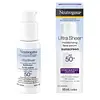What's inside
What's inside
 Key Ingredients
Key Ingredients

 Benefits
Benefits

 Concerns
Concerns

 Ingredients Side-by-side
Ingredients Side-by-side

Centella Asiatica Extract 49%
CleansingWater
Skin ConditioningDibutyl Adipate
EmollientDiethylamino Hydroxybenzoyl Hexyl Benzoate
UV FilterEthylhexyl Triazone
UV AbsorberGlycerin
HumectantNiacinamide
SmoothingPolymethyl Methacrylate
Methylene Bis-Benzotriazolyl Tetramethylbutylphenol
UV FilterPolysilicone-15
UV Filter1,2-Hexanediol
Skin ConditioningBeta-Glucan
Skin ConditioningAllantoin
Skin ConditioningButylene Glycol
HumectantPentylene Glycol
Skin ConditioningArachidyl Alcohol
EmollientSodium Stearoyl Glutamate
CleansingPolyglyceryl-3 Methylglucose Distearate
EmulsifyingSorbitan Sesquioleate
EmulsifyingBehenyl Alcohol
EmollientDecyl Glucoside
CleansingCaprylyl Glycol
EmollientArachidyl Glucoside
EmulsifyingHydroxyacetophenone
AntioxidantAcrylates/C10-30 Alkyl Acrylate Crosspolymer
Emulsion StabilisingCarbomer
Emulsion StabilisingPolyacrylate Crosspolymer-6
Emulsion StabilisingAdenosine
Skin ConditioningDipotassium Glycyrrhizate
HumectantGlucose
HumectantT-Butyl Alcohol
PerfumingXanthan Gum
EmulsifyingTromethamine
BufferingDisodium EDTA
Centella Asiatica Extract 49%, Water, Dibutyl Adipate, Diethylamino Hydroxybenzoyl Hexyl Benzoate, Ethylhexyl Triazone, Glycerin, Niacinamide, Polymethyl Methacrylate, Methylene Bis-Benzotriazolyl Tetramethylbutylphenol, Polysilicone-15, 1,2-Hexanediol, Beta-Glucan, Allantoin, Butylene Glycol, Pentylene Glycol, Arachidyl Alcohol, Sodium Stearoyl Glutamate, Polyglyceryl-3 Methylglucose Distearate, Sorbitan Sesquioleate, Behenyl Alcohol, Decyl Glucoside, Caprylyl Glycol, Arachidyl Glucoside, Hydroxyacetophenone, Acrylates/C10-30 Alkyl Acrylate Crosspolymer, Carbomer, Polyacrylate Crosspolymer-6, Adenosine, Dipotassium Glycyrrhizate, Glucose, T-Butyl Alcohol, Xanthan Gum, Tromethamine, Disodium EDTA
Homosalate 13.5%
Skin ConditioningOctocrylene 10%
UV AbsorberEthylhexyl Salicylate 5%
UV AbsorberButyl Methoxydibenzoylmethane 3%
UV AbsorberAcrylates/Dimethicone Copolymer
Skin ConditioningAlcohol Denat.
AntimicrobialAluminum Starch Octenylsuccinate
AbsorbentButyloctyl Salicylate
Skin ConditioningChlorphenesin
AntimicrobialDimethicone
EmollientDisodium EDTA
Glycerin
HumectantGlyceryl Stearate
EmollientPentylene Glycol
Skin ConditioningPhenoxyethanol
PreservativePolyurethane-62
Silica
AbrasiveSodium Acryloyldimethyltaurate/Vp Crosspolymer
Emulsion StabilisingSodium Hydroxide
BufferingStyrene/Acrylates Copolymer
Tocopheryl Acetate
AntioxidantTrideceth-6
EmulsifyingWater
Skin ConditioningHomosalate 13.5%, Octocrylene 10%, Ethylhexyl Salicylate 5%, Butyl Methoxydibenzoylmethane 3%, Acrylates/Dimethicone Copolymer, Alcohol Denat., Aluminum Starch Octenylsuccinate, Butyloctyl Salicylate, Chlorphenesin, Dimethicone, Disodium EDTA, Glycerin, Glyceryl Stearate, Pentylene Glycol, Phenoxyethanol, Polyurethane-62, Silica, Sodium Acryloyldimethyltaurate/Vp Crosspolymer, Sodium Hydroxide, Styrene/Acrylates Copolymer, Tocopheryl Acetate, Trideceth-6, Water
 Reviews
Reviews

Ingredients Explained
These ingredients are found in both products.
Ingredients higher up in an ingredient list are typically present in a larger amount.
Disodium EDTA plays a role in making products more stable by aiding other preservatives.
It is a chelating agent, meaning it neutralizes metal ions that may be found in a product.
Disodium EDTA is a salt of edetic acid and is found to be safe in cosmetic ingredients.
Learn more about Disodium EDTAGlycerin is already naturally found in your skin. It helps moisturize and protect your skin.
A study from 2016 found glycerin to be more effective as a humectant than AHAs and hyaluronic acid.
As a humectant, it helps the skin stay hydrated by pulling moisture to your skin. The low molecular weight of glycerin allows it to pull moisture into the deeper layers of your skin.
Hydrated skin improves your skin barrier; Your skin barrier helps protect against irritants and bacteria.
Glycerin has also been found to have antimicrobial and antiviral properties. Due to these properties, glycerin is often used in wound and burn treatments.
In cosmetics, glycerin is usually derived from plants such as soybean or palm. However, it can also be sourced from animals, such as tallow or animal fat.
This ingredient is organic, colorless, odorless, and non-toxic.
Glycerin is the name for this ingredient in American English. British English uses Glycerol/Glycerine.
Learn more about GlycerinPentylene glycol is typically used within a product to thicken it. It also adds a smooth, soft, and moisturizing feel to the product. It is naturally found in plants such as sugar beets.
The hydrophilic trait of Pentylene Glycol makes it a humectant. As a humectant, Pentylene Glycol helps draw moisture from the air to your skin. This can help keep your skin hydrated.
This property also makes Pentylene Glycol a great texture enhancer. It can also help thicken or stabilize a product.
Pentylene Glycol also acts as a mild preservative and helps to keep a product microbe-free.
Some people may experience mild eye and skin irritation from Pentylene Glycol. We always recommend speaking with a professional about using this ingredient in your routine.
Pentylene Glycol has a low molecular weight and is part of the 1,2-glycol family.
Learn more about Pentylene GlycolWater. It's the most common cosmetic ingredient of all. You'll usually see it at the top of ingredient lists, meaning that it makes up the largest part of the product.
So why is it so popular? Water most often acts as a solvent - this means that it helps dissolve other ingredients into the formulation.
You'll also recognize water as that liquid we all need to stay alive. If you see this, drink a glass of water. Stay hydrated!
Learn more about Water